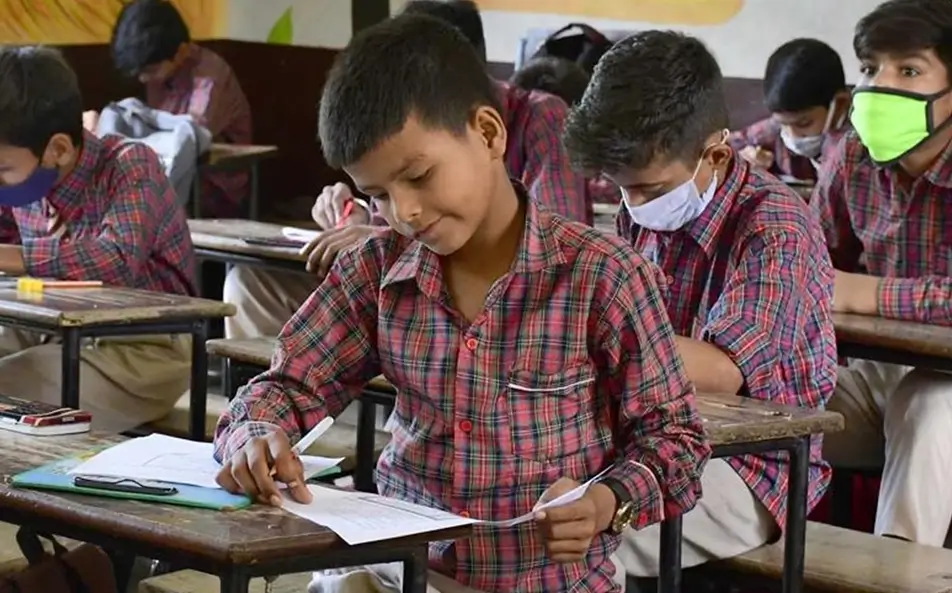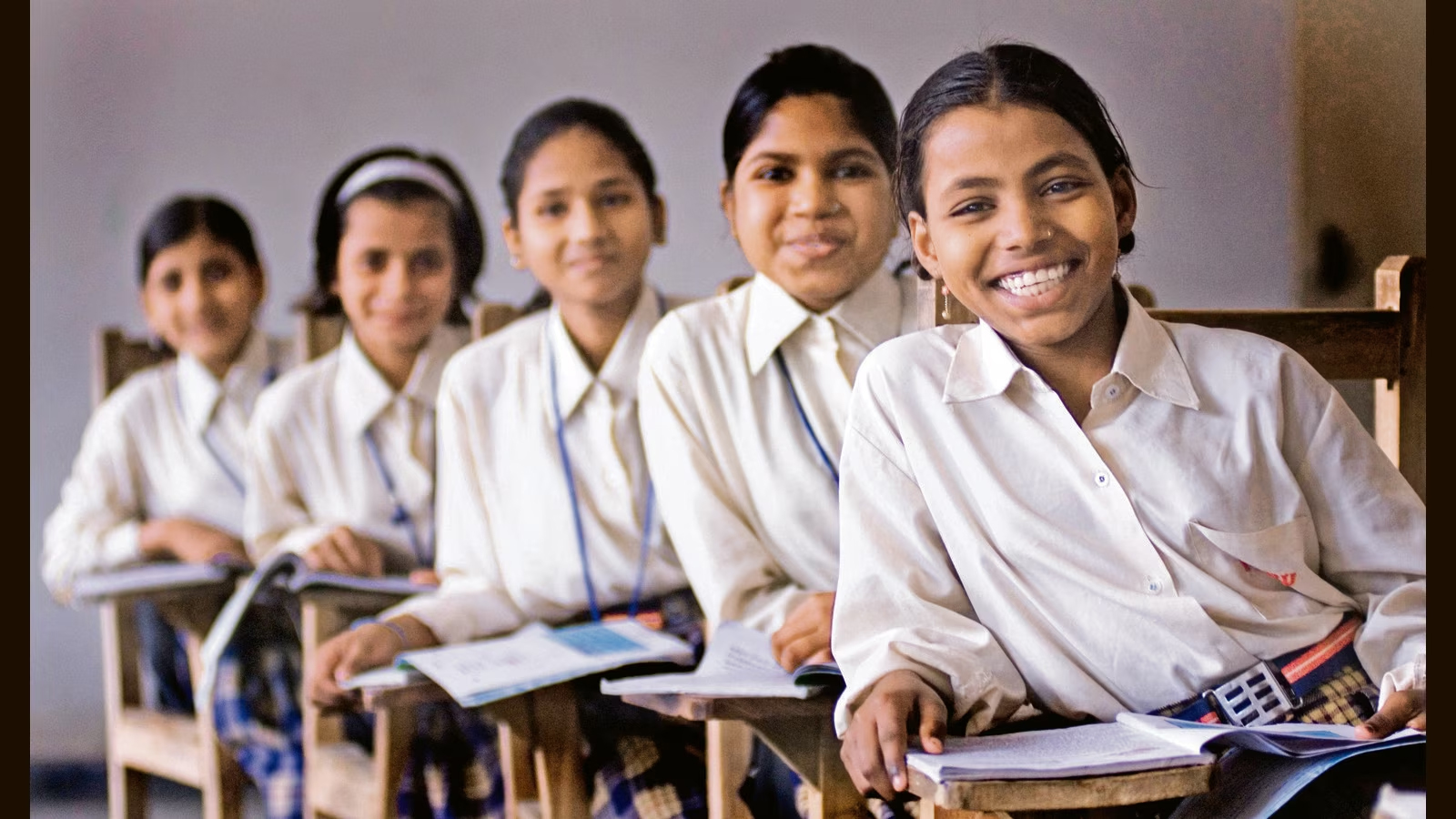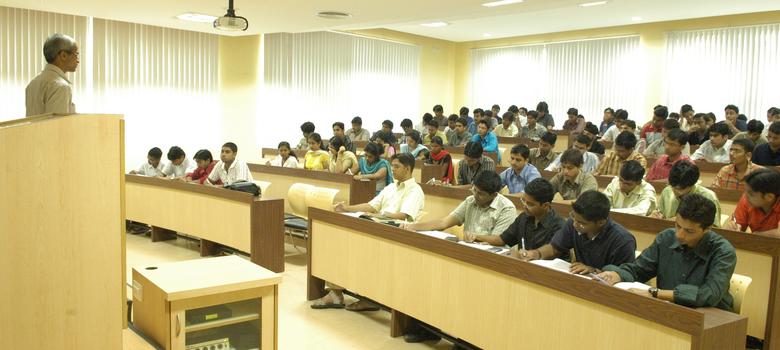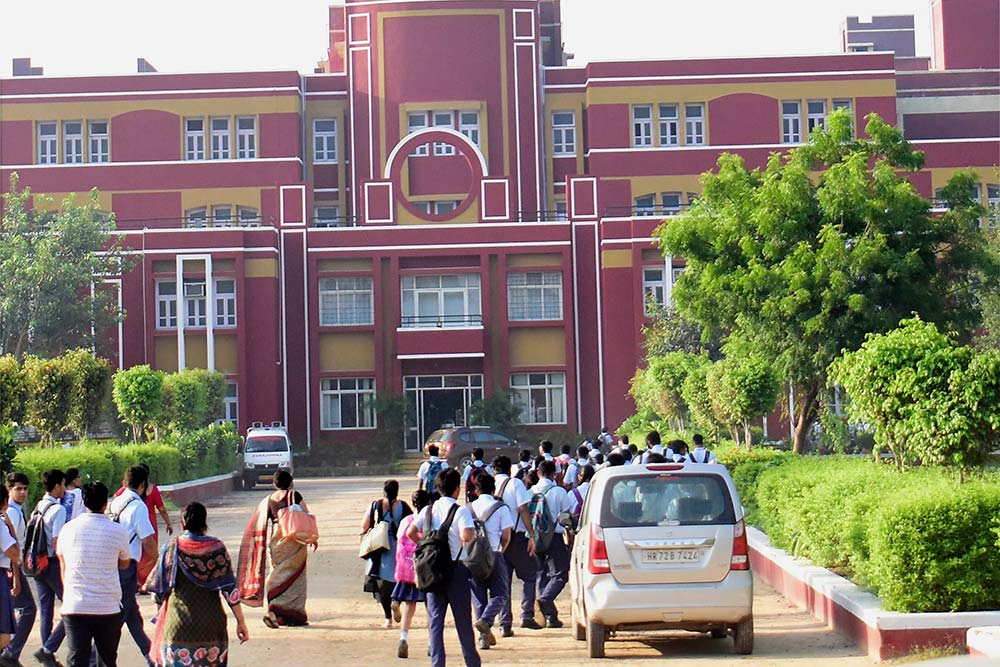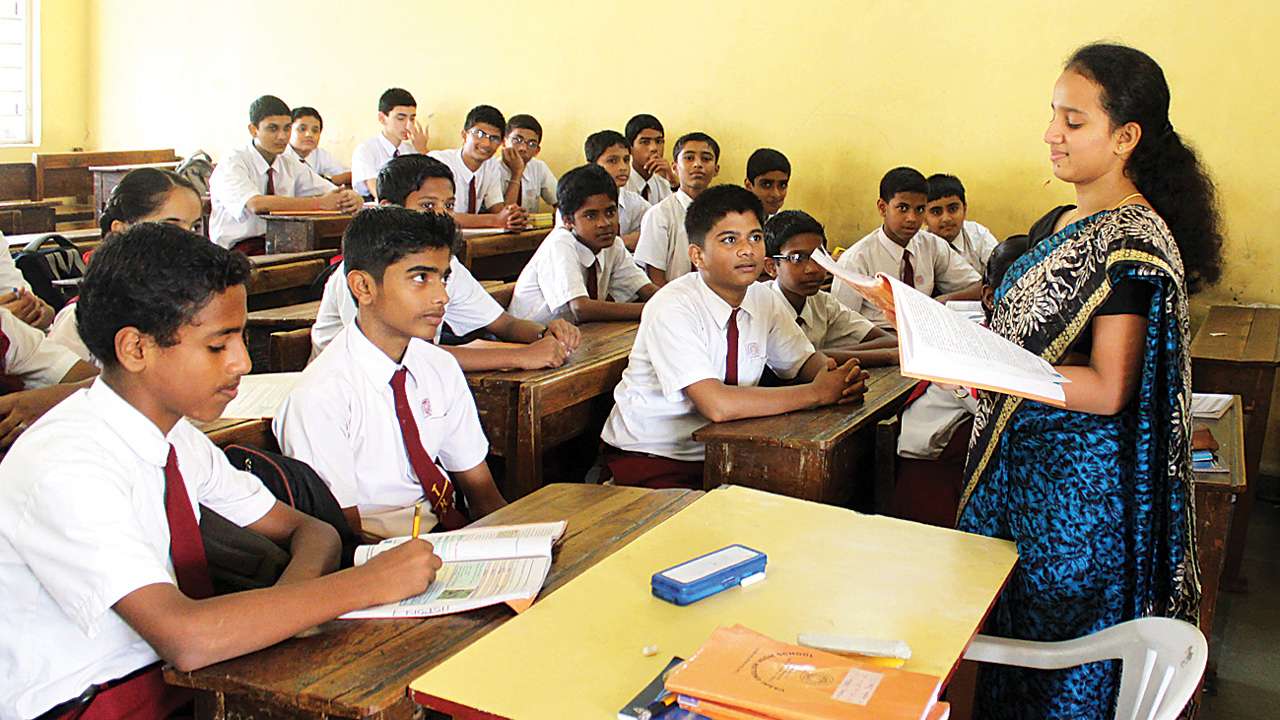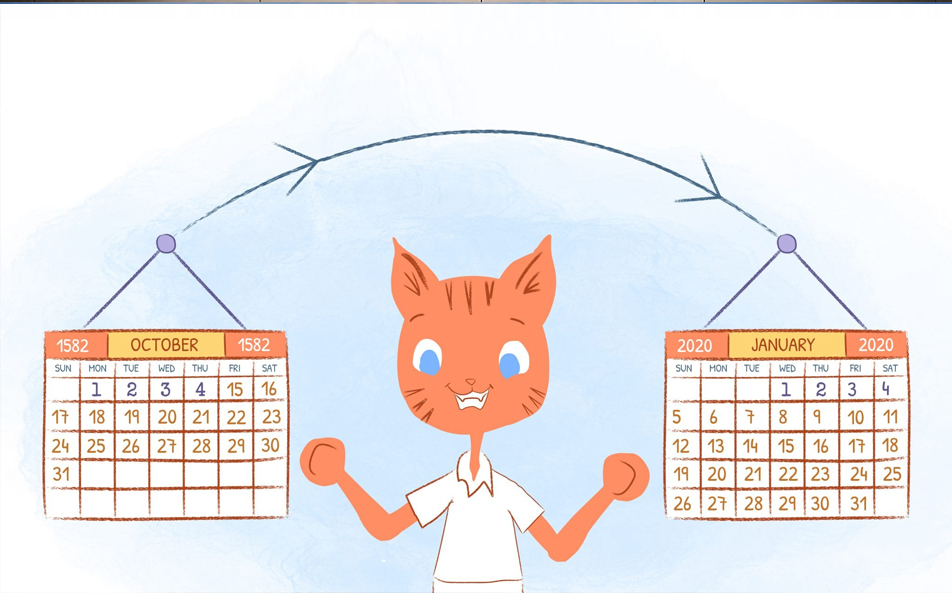
The United Indian

On this joyous occasion of Happy Children's Day, we celebrate the very essence of our future—the young minds who will shape the trajectory of India's continued educational evolution. From the traditional chalkboards that once adorned their classrooms to the cutting-edge chatbots that now assist in their learning journeys, these children embody the spirit of adaptability and growth.
Education, the cornerstone of societal progress, has undergone a transformative odyssey in India. From traditional chalkboards to the integration of cutting-edge technologies like chatbots, the evolution of education system in India has been revolutionary. In this exploration, we delve into the fascinating chapters of India's educational journey, tracing the trajectory from humble beginnings to a dynamic, tech-infused present.
The Roots: Chalkboards and Classrooms
India's educational narrative began with the humble chalkboard, where dedicated teachers imparted knowledge to eager minds. The traditional classroom setup fostered an environment of learning and collaboration. Students, armed with textbooks and notebooks, embarked on a journey of acquiring knowledge that was foundational to their personal and professional lives.
Women's Education: A Cornerstone of Progress
Amidst these technological strides, a pivotal chapter in our country’s educational journey is the recognising the importance of women education in India. Historically, societal norms often restricted women's access to education. However, the narrative is changing. As India progresses, there is a growing acknowledgment of the crucial role women play in shaping the nation's future.
The Empowerment Factor
Education is a powerful tool for empowerment, and when extended to women, it becomes a catalyst for societal transformation. Educated women contribute not only to the workforce but also play a crucial role in nurturing future generations. Recognizing this, educational initiatives focused on women have gained momentum, aiming to bridge the gender gap in education and empower women to break through societal barriers.
Breaking Stereotypes: Women in STEM
The shift towards inclusivity in education is particularly evident in the Science, Technology, Engineering, and Mathematics (STEM) fields. Initiatives promoting women in STEM aim to shatter stereotypes and encourage young girls to pursue careers in traditionally male-dominated fields. This signifies a broader movement towards a more inclusive and diverse educational landscape, where every individual, regardless of gender, has the opportunity to thrive. All this has all the more highlighted the importance of women education in India.
Current Status of Women's Education
Today, the enrollment rates of women in educational institutions have significantly improved. Despite progress, barriers such as societal norms and economic constraints still hinder many women from accessing quality education.
Here are some statistics regarding the status of women education in India in 2023:
-
Female literacy rate: 70.6%
-
Gross enrollment ratio (GER) for girls in primary education: 99.22%
-
GER for girls in secondary education: 88.72%
-
GER for girls in higher education: 27.48%
-
Pupil-teacher ratio (PTR) for girls in primary education: 25.3:1
-
PTR for girls in secondary education: 29.0:1
-
PTR for girls in higher education: 28.0:1
These statistics show that India has made significant progress in improving women education in recent decades. The female literacy rate has increased from 8.6% in 1951 to 70.6% in 2023. Additionally, the GER for girls at all levels of education is now almost equal to the GER for boys.
However, there are still some challenges that need to be addressed especially considering the scenario of higher education system in India. For example, the female literacy rate in rural areas (63.6%) is lower than the female literacy rate in urban areas (82.2%). Additionally, the dropout rate for girls is higher than the dropout rate for boys, especially at the secondary and higher education levels.
Government Initiatives
The Indian government is committed to improving women education and has launched a number of initiatives to achieve this goal. These initiatives include:
-
Beti Bachao Beti Padhao: This initiative aims to reduce female foeticide and improve girls' education.
-
Samagra Shiksha: This is a flagship program that aims to improve the quality of education for all children, including girls.
-
Kasturba Gandhi Balika Vidyalaya (KGBV) Scheme: This scheme provides free education and residential facilities to girls from disadvantaged groups.
-
Children education allowances : The Indian government has launched several initiatives to promote inclusive and quality education, including increased funding for scholarships, expansion of digital learning platforms like Atal Tinkering Labs, and vocational training programs as part of the Union Budget 2025. Additionally, government employees receive a Children Education Allowance (CEA) of around Rs. 2,812 per month per child (with higher rates for children with disabilities) to help cover educational expenses, along with hostel subsidies. Schemes like PM CARES for Children also provide financial support, scholarships, and health insurance to vulnerable children to ensure their continued education and well-being
With increased realisation of importance of education in India and continued investment and effort, India can undoubtedly achieve its goal of providing quality education to all girls and women.
The Tech Revolution: Smart Classrooms and Beyond
The winds of change further swept across the educational landscape with the advent of smart classrooms. Interactive whiteboards, digital content, and multimedia tools replaced conventional teaching methods. This shift aimed to make learning more engaging, catering to diverse learning styles. The integration of technology not only modernized classrooms but also laid the groundwork for the next wave of educational innovation.
Enter the Digital Age: EduTech Boom
As we embrace the digital age, education system in India witnessed an unprecedented surge in EduTech initiatives. From online learning platforms to personalized learning apps, technology became an integral part of the learning process. The EduTech boom democratized education, breaking down geographical barriers and providing access to quality learning resources for students across the nation. E-learning emerged as a game-changer, providing flexibility and accessibility. Students could now access a plethora of resources online, transcending geographical constraints. This shift marked a crucial juncture in democratizing education.
The Rise of Artificial Intelligence in Education
In the ever-evolving landscape, artificial intelligence (AI) emerged as a game-changer in education. Chatbots, powered by AI, became virtual assistants, offering personalized guidance and support to students. The 'teacher' expanded beyond the confines of the classroom, reaching students in the digital realm. This shift has greatly supported higher education system in India. It has not only enhanced the learning experience but also paved the way for a more inclusive and adaptive education system.
Tech as an Enabler
Technology, including AI-driven educational tools, plays a crucial role in levelling the playing field for women in education. Chatbots, for instance, provide personalized learning experiences, catering to individual needs and learning styles. This not only enhances the overall quality of higher education system in India but also empowers women to pursue knowledge and skills on their own terms.
Future Horizons: Navigating the Uncharted
As we map the incredible journey of education in India, the path ahead is filled with possibilities. The fusion of traditional values with modern technology is a testament to India's commitment to providing a world-class education to its citizens. The story unfolds not only in urban centers but also in remote villages, breaking barriers and creating a more equitable educational landscape.
-
Adapting to Change
As we navigate the 21st century, the educational landscape continues to evolve. Artificial intelligence, augmented reality, and gamified learning are poised to redefine how students engage with information.
-
Personalized Learning Journeys
The future holds promise for even more personalized learning journeys. Chatbots, powered by advanced algorithms, will tailor educational experiences based on individual strengths and weaknesses.
-
Global Collaboration
Technological advancements in education system in India have enabled seamless global collaboration. Students can connect with peers worldwide, fostering cross-cultural understanding and preparing them for a globally connected future.
-
Addressing Mental Health in Education
Awareness and support systems for mental health are increasingly becoming integral to the higher education system in india. Creating a positive learning environment that addresses the mental well-being of students is essential for their overall development.
In this journey from chalkboards to chatbots, the role of women's education emerges as a beacon of progress. As India propels towards a future where education is not just a privilege but a fundamental right, the inclusivity and empowerment of women become non-negotiable aspects of this transformative narrative. From classrooms to digital platforms, from textbooks to AI-driven tools, education in India is a dynamic force, shaping the destinies of individuals and the nation as a whole.
Reflecting on the incredible journey of education in India, it is these bright faces that illuminate the path forward. The inclusivity and technological advancements discussed above resonate profoundly on Children's Day, emphasizing the importance of education in India and focusing on developing an environment that nurtures every child's unique potential.
In this era of innovation, let us not only celebrate the progress made but also recommit ourselves to providing these young learners with the tools, opportunities, and encouragement they need to thrive in a future where possibilities are limitless. Afterall, it's not just about imparting knowledge; it's about shaping a future where education is a beacon of progress and empowerment.
Happy Children's Day to the future architects of our nation!
Read more in Social Cause
Jul 13, 2025
TUI Staff
Jun 28, 2025
TUI Staff

Stay Tuned with The United Indian!
Our news blog is dedicated to sharing valuable and pertinent content for Indian citizens. Our blog news covering a wide range of categories including technology, environment, government & economy ensures that you stay informed about the topics that matter most. Follow The United Indian to never miss out on the latest trending news in India.
©The United Indian 2024

